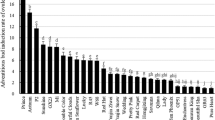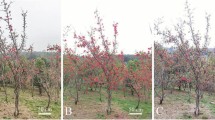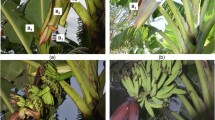Abstract
BAMBOO flowers only once during its lifetime, dying at the end of its first fruiting season. This monocarpic flowering is intriguing not only in that it occurs after a lapse of 12 to 120 years, but because it is 'gregarious', local populations of bamboo flowering together and then dying. New bamboo plants are produced either by vegetative subdivision or from seed. Breeding of bamboo, however, has proved to be extremely difficult: seed production depends on unpredictable circumstances and events1, and the basis of gregarious flowering, and the causes of death and flowering, are not known. Flowering in vitro has previously been studied by culturing expiants of stem tips, mature stems, roots, petioles, leaves, inflorescences, flowers and so on2–5. Although bamboo plantlets have been formed by means of organogenesis and embry-ogenesis6–8, in vitro flowering has not previously been reported for bamboo. We now report on an in vitro system in which we could consistently induce flowering in the two species of bamboo Bambusa arundinacea Willd and Dendrocalamus brandisii Kurz. Inflorescence expiants containing a panicle of spikelets gave rise to several viable inflorescences on subculture; fertile seeds were also produced. Further refinements to this system could lead to the introduction of breeding programmes to improve bamboo, and to the production of perennial seeds for bamboo, as well as to a better understanding of the physiology underlying flowering behaviour in bamboo.
This is a preview of subscription content, access via your institution
Access options
Subscribe to this journal
Receive 51 print issues and online access
$199.00 per year
only $3.90 per issue
Buy this article
- Purchase on Springer Link
- Instant access to full article PDF
Prices may be subject to local taxes which are calculated during checkout
Similar content being viewed by others
References
Janzen, D. H. A. Rev. ecol. Syst. 7, 347–391 (1976).
Pierik, R. L. M. Naturwissenschaften 53, 45 (1966).
Nitsch, C. & Nitsch, J. P. Planta 72, 371–384 (1967).
Paulet, P. & Nitsch, J. P. Annls Physiol. vég Paris 6, 333–345 (1964).
Chang, W.-c. & Hsing, Y.-i. Nature 284, 341–342 (1980).
Nadgir, A. L., Phadke, C. H., Gupta, P. K., Parasharami, M. & Mascarenhas, A. F. Silvae Genet. 33, 219–223 (1984).
Rao, V., Rao, I. R. & Narang, V. Pl. Cell Reps 4, 191–194 (1985).
Hassan, A. A. & Debergh, P. Pl. Cell Tiss. Organ Culture 10, 73–77 (1987).
White, P. R. The Cultivation of Animal and Plant Cells 2nd edn (Ronald, New York, 1963).
Murashige, T. & Skoog, F. Physiol. Pl. 15, 473–479 (1962).
Author information
Authors and Affiliations
Rights and permissions
About this article
Cite this article
Nadgauda, R., Parasharami, V. & Mascarenhas, A. Precocious flowering and seeding behaviour in tissue-cultured bamboos. Nature 344, 335–336 (1990). https://doi.org/10.1038/344335a0
Received:
Accepted:
Issue Date:
DOI: https://doi.org/10.1038/344335a0
Comments
By submitting a comment you agree to abide by our Terms and Community Guidelines. If you find something abusive or that does not comply with our terms or guidelines please flag it as inappropriate.



